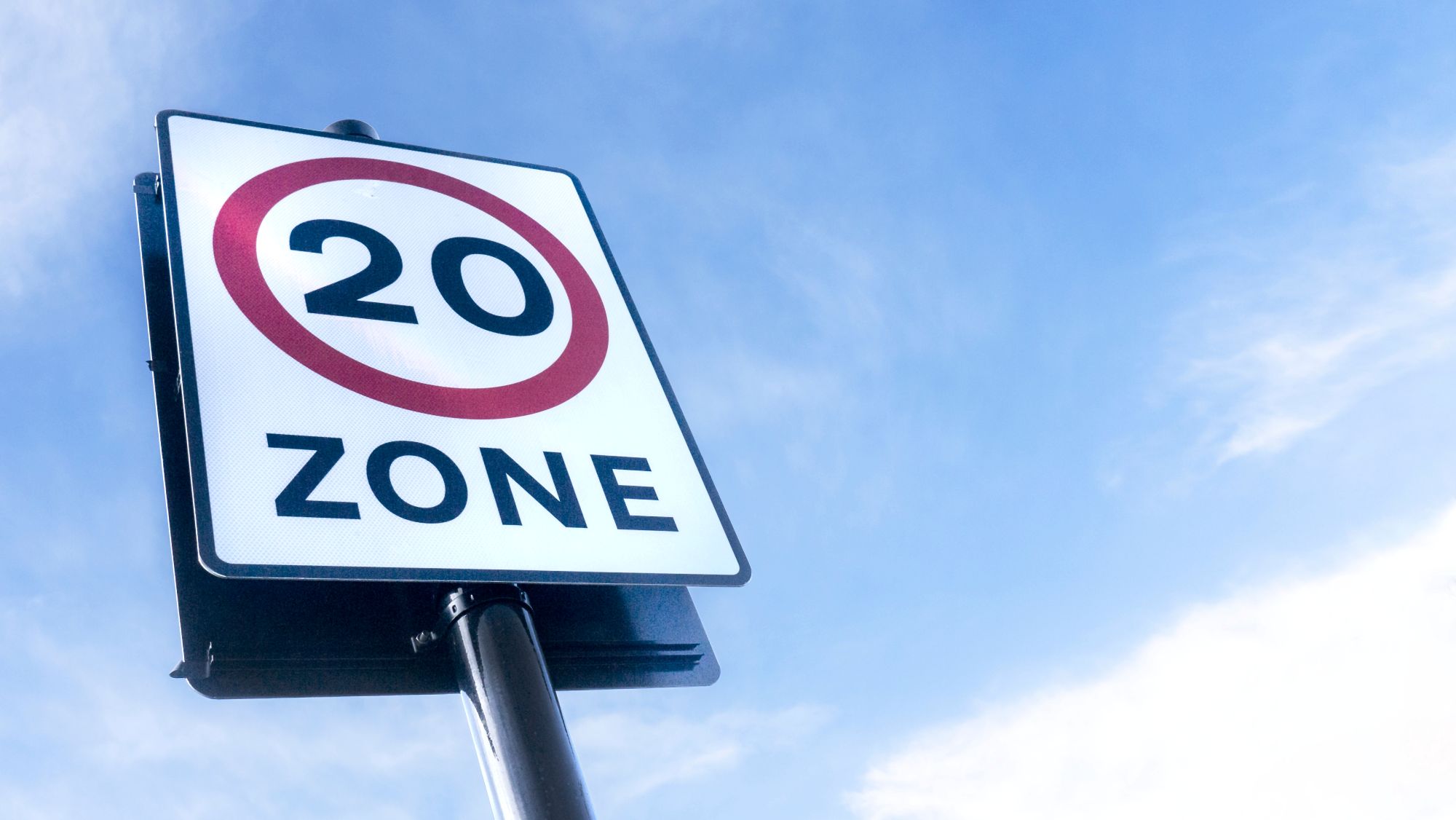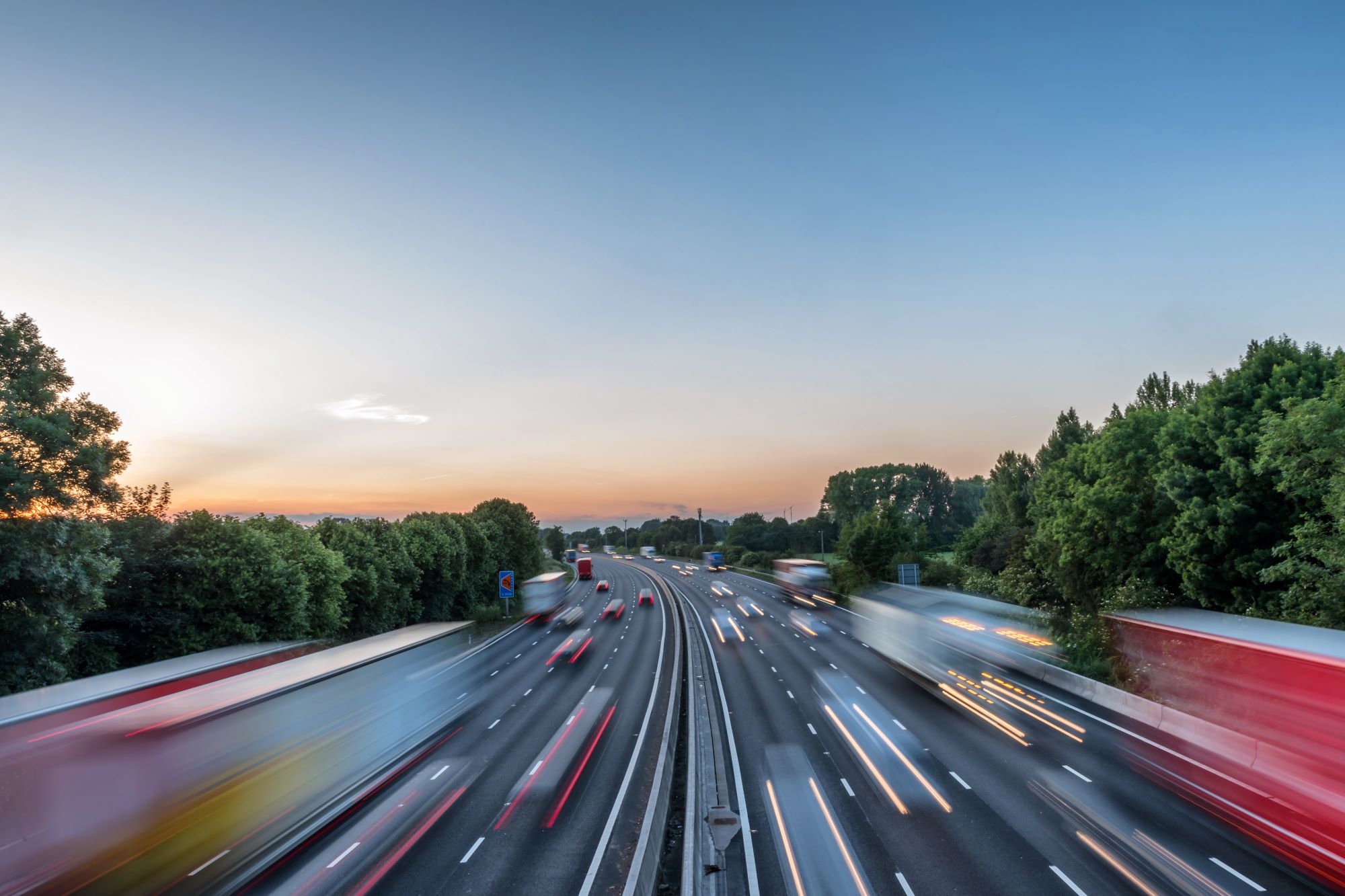
Susie Jones
What are the implications of 20mph speed limits for fleets?
Created: 16/04/2025
•
Updated: 16/04/2025
In 2023, 188 HGVs were involved in collisions that resulted in fatalities, a decline from 2022 but a concerning statistic nonetheless. These accidents could have resulted from several factors, such as driver fatigue, poor vehicle maintenance, weather conditions, or the actions of other road users. However, data from road safety charity Brake suggests that 58% of road-related deaths had speed reported as a road safety factor. In this blog, we'll explore how the implementation of 20mph speed limits could impact fleet operations and lower fatality numbers.
Where do HGV accidents occur?
According to EROS, only 10% of HGV collisions occurred on a motorway - the other 90% were more likely to happen on an urban or rural road. Rural roads present truck drivers with narrow spaces, sharp turns, and interactions with vulnerable road users like cyclists and pedestrians, increasing the likelihood of accidents. Urban areas pose a greater risk for truck drivers due to higher-density traffic, frequent stops, pedestrian activity, and complex road layouts - combined with the unpredictability of urban roads makes them more of a hazard for truck drivers.
The impact of 20mph zones.
Figures published by the Welsh Government have shown 100 fewer casualties on urban roads in 2024 compared to the same period in 2023 before the 20mph speed limit was enforced in urban areas.
The scheme is supported by organisations such as Brake and Cycling UK, and now fleet management specialists FleetCheck are encouraging haulage companies to get behind the scheme. They argue that the shift from 30mph to 20mph will have minimal impact on fleet efficiency and strongly reinforce the idea that it would save lives each year.

What do fleets and drivers think of the 20mph speed limit?
According to FleetCheck, haulage operators had mixed feelings towards the initiative. Some saw the changes as a hindrance to efficiency - arguing that lower speed limits may force some fleets into reducing the number of deliveries they can make in any given period.
Drivers on SNAP's social media pages had strong feelings toward the suggestion. One driver commented:
"Who is going to back more 20mph zones? The whole standard of driving is the problem. Ever since we came out of lockdown, the standard of driving has been diabolical, that's including cars, vans, and trucks."
The sentiment remained the same on socials, with many not supporting the change.
The benefits of more 20mph zones.
Reduced speed zones offer several benefits for truck drivers.
• Lower speeds improve reaction times and reduce stopping distances, making it easier to avoid collisions - particularly in urban areas.
• Trucks are more likely to have less vehicle wear and tear with reduced speed limits.
The obstacles fleet companies could face.
As mentioned, some fleet companies are concerned that lower speed limits could reduce the number of deliveries they could make in any given period. Fleets could also face the following challenges:
• Longer journey times: affecting time-sensitive deliveries, impacting scheduling and customer expectations.
• Route planning: companies may have to adjust routes to account for slower speeds.
• Compliance: investing in additional driver training to ensure compliance with new speed limits will be crucial.
Although these issues can pose additional challenges for fleet companies, many can be managed proactively. Many would argue the long-term safety benefits outweigh the obstacles.

The numbers speak for themselves.
In a revisited campaign titled Hazardous Highways, SNAP identified the most hazardous GB locations. We delve deeper to discover which roads could benefit from a reduced speed limit.
SNAP discovered the South East had the most hazardous roads. Kent has the most dangerous roads in Britain and is proposing a target of zero road fatalities on the Kent Highway Network by 2050. Which roads are the most concerning?
• The A254: A short road running for just four miles but was named Britain's highest-risk route in 2018. The report singled out a stretch of the A254 between the junction of the A28 at Margate and the junction with the A255 near Ramsgate. The speed limit on this stretch varies between 30mph and 40mph - built-up areas and a heavy traffic flow from the port of Dover make this road particularly dangerous for cyclists, pedestrians, and other road users. Could this stretch of road benefit from slower speed limits?
• The A252: Notorious for its high accident rates, the A252 runs for 8.7 miles. In 2020, work commenced to reduce the number and severity of accidents, among the changes, a decrease from 60mph to 50mph on this stretch, except where lower limits are in force. However, is this enough to shake off the road's reputation as one of Britain's worst?
Surrey and Essex were also at the top of the list and had a combined total of 30,378 accidents over the last five years. High accident rates in Surrey can be attributed to its mix of populated towns and rural roads. Its closeness to London and major motorways has resulted in more collisions.
• The M25: Also known as the London Orbital Motorway, the M25 is one of Britain's busiest roads while also being the second-longest ring road in Europe. Between 2007 and 2016, 7,673 accidents and 80 fatalities were reported. As a crucial motorway, speed adjustments as low as 20mph would be ludicrous. However, would the M25 benefit from restricted speed zones?
• A3: Running for 67 miles, the A3 can be a challenging road to drive on due to its high traffic volume, speed limits, and sections with poor road conditions.
Frequently asked questions
What is the maximum speed limit for trucks?
Truck drivers must adhere to strict speed regulations. These restrictions are in place to account for the size, weight, and braking capacity of a truck.
• Single carriageways: A truck over 7.5 tonnes is limited to a maximum speed of 50mph.
• Dual carriageways: 60mph is the maximum speed limit for a truck over 7.5 tonnes.
• Motorways: Truck drivers must not exceed 60mph on a motorway.
Speed limiter regulations in the UK In the UK, speed limiter devices must be installed into any truck to cap the maximum speed the vehicle can travel.
• Legal requirements in the UK: All trucks over 3.5 tonnes must have a speed limiter set to 56 mph.
• How they work: Speed limiters limit the fuel supplied to the engine once the vehicle reaches a preset speed - ensuring drivers cannot exceed the limit.
Does a private truck need a speed limiter?
A private truck does not require a speed limiter unless it is being used for commercial purposes. You must declare if your vehicle is exempt from needing a speed limiter when you take it for its MOT by filling in a speed limiter declaration form.



